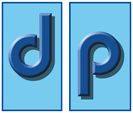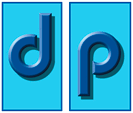The current state of the print industry.
A relevant place to begin is to reveal some recent statistics from 2015 to draw attention to the size of the print industry in the U.K. We are the World’s fifth largest producer of printed products in the World, only behind the U.S.A., China, Japan and Germany.
With over 8,600 companies employing over 122,000 people and a gross turnover of £13.5 billion in the U.K., these are useful statistics to roll off the tongue to anyone that repeats the falsehood ‘print is dead`. It simply is not true. The industry is alive and kicking.
Print advertising
Print advertising is in decline and has been for some time now. Indeed, it is predicted that by 2019 only 5% of total advertising spending will be on print. The advances in mobile handsets and social media have created new advertising opportunities in what is termed the ‘weightless` economy. However, as one door closes another one opens. An example of this is resurgence in demand for vinyl, sales have increased by 260% from 2009 as consumers build record collections with printed covers of artistic appeal and merit. This is an example of people’s desire to own beautiful things that are tangible and can be touched. Imagery alone cannot do this and this is one market the print industry needs to adapt and evolve in order to meet demand.
Another identifiable area of growth is the recent rise in paper-back book sales. The consumer cannot fill a bookshelf with kindle downloads after all.
It has become clear that in order for firms to increase brand loyalty and connect with the consumer they need to engage in multi-sensory marketing. Imagery alone is not enough. In 2013 coca-cola launched an ambitious campaign producing over a billion personalised bottles with popular names on, e.g. Chris, Sarah, Dan and Laura. This was successful and sales rose by 7% as people purchased their own personal bottle of coke. However, the wider point here is the collaboration between print and digital media as the consumer made media impressions on social media like Facebook, twitter and Instagram with their novelty coke bottles. It is an example of the print industry evolving to fill a gap in the market using the technology that is supposedly killing the print industry.
Coca-cola took this form of marketing a step further producing 2 million unique design bottles with the aim of creating collection items.
Like the previous strategy it appears to be successful with an increase of sales and brand preference as a result.
In recent years industry turnover has been relatively stable. However, there has been a decrease in the amount of companies and employees within the print industry. This can be attributed to two major factors, the financial crash of 2008 reverberated throughout the whole economy due to recession, many print businesses did not possess the financial resources required to weather the storm. Lower profit margins led to many exiting the industry, it should be noted though, that almost all industries faced these challenges and by 2012 things began to stabilise and up until the present we have witnessed a steady increase in income for the print industry. The decline in overall employees can be attributed to an increase in production techniques and technological advances in machinery that makes up fixed capital investment. Although it should be noted that the recession after 2008 did lead directly to job losses throughout the industry due to a drop in overall demand.
When considering fixed capital investment there has been a clear shift in demand from sheet fed litho to digital process printing recently and this is set to continue. Due to less demand for high volume long-run orders many companies have opted for digital print which is a growing market. However, cut sheet still accounts for roughly double the market share that digital process print does for the vast majority of printing businesses in the U.K. today.
In summary
Therefore, to summarise the current state of the print industry these are salient points to observe. The industry is evolving, not dying. In order to succeed printing companies must adapt to new markets and evolve their products accordingly. Personalised products are a growth area and ‘uniqueness` is in growing demand from consumers. New communication platforms through social media can be used to increase this demand. Print advertising is likely to continue decreasing, especially mass produced, long-run impersonal messages which only need to be visualised and not touched.
Advances in technology will mean that the overall workforce in the U.K. print industry will continue to decline (although not sharply) in the near to medium future due to greater automation.
Finally, latest trends in printing technology shows digital process printing will continue to expand further as a percentage of overall production and sheet-fed litho will decline as a consequence. However, this will be stabilised as the demand for quality print in niche growth market sectors will continue to grow and certain existing markets will be protected due to the required standard of quality that can only currently be met through sheet-fed litho print process. The future of printing industry is exciting.








Leave A Comment